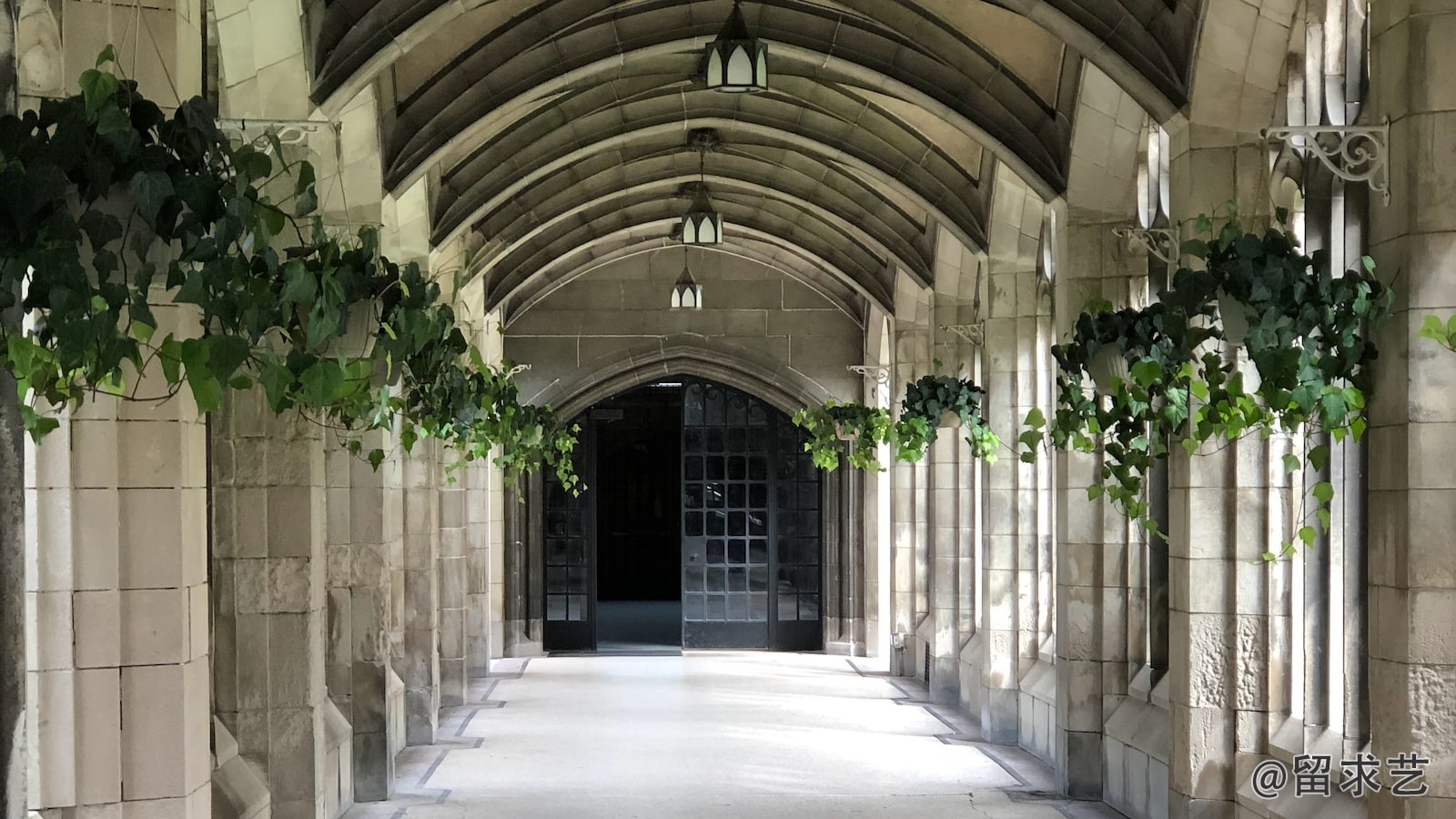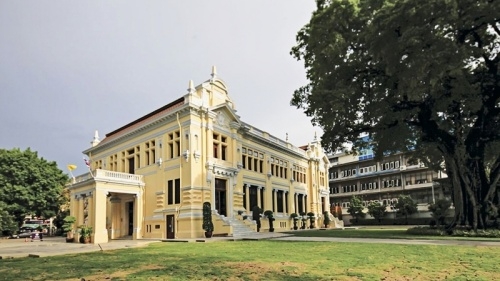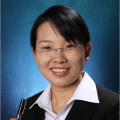Bernhard Schmidt伯恩哈德施密特 伯恩哈德woldemar施密特 ( 1879年 3月30日 -1 935年1 2月1日)是一個(gè)愛沙尼亞瑞典配 鏡誰住在德國。 .在1930年,他發(fā)明了施密特望遠(yuǎn)鏡 ,其中更正為光學(xué)誤差的球面像差 ,昏迷,和散光,使盡可能為第一次的建設(shè)非常大,廣泛的直角反射相機(jī)的曝光時(shí)間短,為天文研究。 內(nèi)容 [hide]1 童年 2 青年 3 成年 4 米特韋5 貝格朵弗 6施密特相機(jī) 去年 7 年 8 個(gè)人生活及遺產(chǎn) 9 See also 9 也見 10 External links 10 外部鏈接 11 Bibliography 11 參考書目 [ edit ] Childhood [ 編輯 ] 童年 Schmidt was the son of Carl Constantin and Marie Helene Christine ( née Rosen) Schmidt.施密特是兒子卡爾詩丹頓和Marie林蕙克里斯?。?née羅森)施密特。 He grew up on the island of Naissaar , off the coast of Reval (Tallinn) , Estonia , then part of the Russian Empire .他成長起來的島, 內(nèi)沙島 ,沿海海面。 Reval (塔林) , 愛沙尼亞 ,然后的一部分, 俄羅斯帝國 。 The inhabitants of this island, mainly Estonian Swedes, generally spoke Swedish or Estonian , but the Schmidt family also spoke German .居民在本島,主要是愛沙尼亞,瑞典,一般以瑞典語或愛沙尼亞語 ,但施密特家庭也講德語 。 Bernhard was the oldest of six children, three boys (one of whom died in infancy) and three girls.伯恩哈德是最古老的六個(gè)孩子,三個(gè)男孩(其中一人死亡,在嬰兒期)和3個(gè)女孩。 Naissaar was a small, rural island whose population mainly supported themselves through fishing and piloting ships into the port of Reval.內(nèi)沙島是一個(gè)小,農(nóng)村島嶼的人口,主要是支持自己通過捕魚和駕駛船舶進(jìn)入港口。 Reval 。 With his younger brother August Fredrik, Bernhard Schmidt engaged in many childhood adventures on the island.與他的弟弟弗雷德里克8月,伯恩哈德施密特從事了許多童年的冒險(xiǎn)上島。 He was an extremely inquisitive, inventive, and imaginative young person and adult.他是一個(gè)非常探究性,創(chuàng)造性,和富有想象力的年輕人和成人。 For example, when young he built his own camera from a purchased lens and old concertina bellows and succeeded in photographing his local surroundings and various family members, and even sold some of his photos.舉例來說,當(dāng)年輕的他建立了自己的相機(jī),從購買的鏡頭和舊concertina波紋管,并成功拍攝,他在當(dāng)?shù)氐沫h(huán)境和各家庭成員,甚至出售他的一些照片。 He also became fascinated with the night sky and constellations.他也成為著迷的夜空和星座。 Another adventure, however, proved tragic and marked Schmidt for the rest of his life.另一種冒險(xiǎn),但是,證明了悲慘和顯著施密特至于其余的他的生命。 When he was 15 years old, he experimented with gunpowder .當(dāng)他15歲,他試行了火藥 。 He packed an iron pipe with a charge, but through a mistake with the fuse the pipe exploded, and he lost the thumb and index finger of his right hand.他包裝一鐵管與負(fù)責(zé),而是透過一個(gè)錯(cuò)誤與引信管發(fā)生爆炸,和他失去了拇指和食指的右手。 Despite his mother's attempts to clean and bandage the wounds, surgeons in Tallinn later amputated the whole hand along with the forearm.盡管他的母親的企圖清潔和包扎傷口,外科醫(yī)生在塔林后截肢,整個(gè)手隨前臂。 This event appears to have deepened his reserve and introspection, qualities well noted by his contemporaries in later life.這一事件似乎已經(jīng)加深了他的儲備和反省,素質(zhì),以及他所指出的同時(shí)代人在以后的生活。 [ edit ] Youth [ 編輯 ] 青年 In spite of his loss, Schmidt was soon experimenting and inventing again.盡管如此,他的損失,施密特很快試驗(yàn)和發(fā)明。 He built a dynamo and got August to crank it.他建立了一個(gè)發(fā)電機(jī),得到了8月至曲柄。 He also took more photos and became adept at developing and printing them.他還采取了更多照片,并成為善于發(fā)展和印刷。 In 1895 he moved to Reval, and for a time worked at retouching photographs.在1895年,他遷移到。 Reval ,和今后一個(gè)時(shí)期工作,在修飾的照片。 Later he worked for the Volta Electrical Motor Works and became skilled in drafting.后來,他為沃爾特電機(jī)工程,并成為熟練的在起草。 In 1901 he went to Gothenburg , Sweden , to study at the Chalmers University of Technology , but soon thereafter switched to the University of Mittweida in the Kingdom of Saxony to further his education.在1901年,他到哥德堡 , 瑞典 ,研究在查爾默斯技術(shù)大學(xué) ,但此后不久切換到大學(xué)的米特韋達(dá) ,在英國薩克森州 ,以進(jìn)一步他的教育。 [ edit ] Adulthood [ 編輯 ] 成年 The 2m Schmidt Camera (the Alfred-Jensch Telescope in Tautenburg , Germany )該2米施密特相機(jī)(阿爾弗雷德-詹希望遠(yuǎn)鏡在tautenburg , 德國 ) During this period his interest in astronomy and optics increased.在此期間,他的興趣在天文學(xué)和光學(xué)增加。 In Mittweida he had hoped to study with Dr. Karl Strehl, a noted optical theorist.在米特韋達(dá),他原本希望研究與博士卡爾strehl ,一位著名的光學(xué)理論家。 Strehl, however, had recently departed. strehl然而,最近離開。 Gradually, Schmidt found his true calling, namely the grinding and polishing of highly precise optics for astronomical applications.漸漸地,施密特發(fā)現(xiàn)他的真實(shí)要求,即研磨和拋光高精度的光學(xué)天文數(shù)字般的申請。 He seems to have begun the grinding of mirrors sometime around 1901, and thereafter began to sell some of his products to amateur astronomers.他似乎已開始磨鏡左右, 1901年,并在其后開始銷售他的一些產(chǎn)品,以業(yè)余天文學(xué)家。 By March 1904, he had made so much progress in his new endeavor that after finishing his studies, he was soon in contact with professionals at the major observatories in Germany.由1904年3月,他已作出了很大的進(jìn)展,以便在他的新的奮斗后,整理他的研究,他很快就在接觸的專業(yè)人士在主要觀測站,在德國。 His business rapidly took off when noted astronomers such as Hermann Carl Vogel , and Karl Schwarzschild realized the excellence of Schmidt's mirrors for their researches.他的業(yè)務(wù)迅速起飛時(shí)指出,天文學(xué)家,如赫爾曼卡爾傅高義 ,和卡爾史瓦西實(shí)現(xiàn)了卓越的施密特的鏡子,為他們的研究。 [ edit ] Mittweida years [ 編輯 ] 米特韋達(dá)年 Between 1904 and 1914, Schmidt's business boomed and he acquired an immense reputation in Germany.之間的1904和1914年,施密特的業(yè)務(wù)興旺,他獲得了巨大的聲譽(yù),在德國。 Not only did he produce some of the most difficult and precise mirrors ever attempted up to that time, but he was entrusted with correcting and improving lenses originally supplied by famous optical houses, for example the 50cm Steinheil visual refractor at the Potsdam Astrophysical Observatory.他不僅產(chǎn)生的一些最困難和最精確的鏡子以往任何時(shí)候都嘗試了這個(gè)時(shí)間,但他是委托與糾正和改進(jìn)的鏡頭原本供應(yīng)由著名光學(xué)家,例如五十零厘米施泰因海爾視覺折射在波茨坦天體物理天文臺。 As his business increased, he hired several assistants, two of whom have left valuable accounts of Schmidt's working methods.作為他的業(yè)務(wù)增加,他雇傭了幾名助理,其中兩人已離開了寶貴的帳目,施密特的工作方法。 Schmidt also bought an automobile, a rare luxury then, and employed a friend as chauffeur. Schmidt還買了汽車,一種罕見的奢侈品,那么,和雇用的一位朋友作為司機(jī)。 Using a long focus horizontal mirror and a plane coelostat, both of his own manufacture, he took impressive photos of the sun, moon, and major planets.使用長焦距的橫向一面鏡子,和飛機(jī)coelostat ,無論是他自己制造的,他令人印象深刻的照片,太陽,月亮,和主要的行星。 When one considers that he did much of the fabrication literally using just one hand, it is difficult not to be astonished at Schmidt's skill.當(dāng)一個(gè)人認(rèn)為他大部分的制作字面上只用一方面,它是很難不被驚訝,施密特的技巧。 World War I brought the boom to an end. 第一次世界大戰(zhàn)后所帶來的蓬勃發(fā)展上一個(gè)句號。 Schmidt was arrested as an enemy-alien, as Estonia belonged to the Russian Empire, and was sent to a internment camp for about six months.施密特被逮捕視為敵人-外國人,愛沙尼亞屬于俄羅斯帝國,被送往一營約6個(gè)月。 After his release, he remained under police control and some of his suspicious-looking astronomical equipment was confiscated.獲釋后,他仍受到警方的控制和他的一些看起來可疑的天文設(shè)備被沒收。 He attempted to continue his business, but as the war dragged on and turned to defeat for Germany, the economy became grim and scientists had no money for astronomy.他企圖繼續(xù)他的業(yè)務(wù),但隨著戰(zhàn)爭的拖延下去并轉(zhuǎn)過身去德國戰(zhàn)敗,成為嚴(yán)峻的經(jīng)濟(jì)和科學(xué)家沒有錢為天文學(xué)。 The situation did not improve after the war because of the political turmoil in Germany and the need to pay war reparations.情況沒有改善戰(zhàn)爭結(jié)束后,由于政治動蕩,在德國和需要支付戰(zhàn)爭賠款。 Inflation galloped out of control in 1923 and many people lost their entire savings. galloped通貨膨脹失去控制,在1923年和很多人失去了他們的整個(gè)儲蓄。 By the mid-1920s, Schmidt's business was ruined and he had to liquidate his remaining equipment as junk.由半山上世紀(jì)20年代,施密特的業(yè)務(wù)破壞,他要清算他的其余設(shè)備為垃圾。 [ edit ] Bergedorf [ 編輯 ] 貝格朵弗 From 1916 onward Schmidt had been in contact with Professor Richard Schorr , the director of the Hamburg Observatory , a facility located outside Hamburg in the countryside near the village of Bergedorf .從1916年起,施密特已經(jīng)接觸的教授理查德schorr ,主任漢堡天文臺 ,一個(gè)設(shè)施位于以外的漢堡在鄉(xiāng)下的村附近的貝格朵弗 。 Schorr had become interested in Schmidt's horizontal mirror and coelostat telescope and ordered one to be built for his observatory. schorr已成為有興趣在施密特的橫向一面鏡子, coelostat望遠(yuǎn)鏡,并下令一要興建,他天文臺。 After the war when Schmidt's economic situation became increasingly difficult, Schmidt began making overtures to Schorr for some kind of work at the observatory.戰(zhàn)爭結(jié)束后,當(dāng)施密特的經(jīng)濟(jì)形勢變得越來越困難,施密特開始序曲,以schorr某種工作時(shí),天文臺。 Schorr had only a little to offer: Schmidt could come to Bergedorf and lodge for free; there was repair work to do on the horizontal telescope, for which he would be paid a small fee. schorr只有很少提供:施密特可以來貝格朵弗和投訴,免費(fèi);有修復(fù)工作要做上醒目的望遠(yuǎn)鏡,他將支付少量費(fèi)用。 This was in 1926.這是在1926年。 For a time Schmidt did not accept.今后一個(gè)時(shí)期,施密特沒有接受。 He had a number of patents to his credit, one of which involved using a wind-driven propeller to power boats forward.他有一個(gè)專利數(shù)量,以他的信用,其中涉及利用風(fēng)力驅(qū)動的螺旋槳,以權(quán)力的船只前進(jìn)。 Schmidt hoped to turn this invention into something profitable.施密特希望把這項(xiàng)發(fā)明變成有利可圖的。 He also went back to Estonia for a family visit and to scout out opportunities in optics, as Estonia had become an independent republic after World War I.他還回到愛沙尼亞,為一個(gè)家庭訪問,并童軍出的機(jī)會,在光學(xué),愛沙尼亞已成為一個(gè)獨(dú)立的共和國后,第一次世界大戰(zhàn)。 Nothing came of these efforts, and by 1927 Schmidt's prospects were so poor that he accepted Schorr's offer.沒有結(jié)果出來的這些努力,由1927年施密特的前景,使窮人,他接受schorr的提供。 He began to establish a workshop in the basement of the Main Service Building at the observatory and to repair the horizontal telescope.他開始建立了一個(gè)講習(xí)班在地下室的主要服務(wù)建設(shè)天文臺和維修水平的望遠(yuǎn)鏡。 During 1927 and 1929, Schmidt participated in two solar eclipse expeditions mounted by the Hamburg Observatory, the first to northern Sweden and the second to the Philippines .在1927年和1929年,施密特參加了兩次日食遠(yuǎn)征展開,由漢堡天文臺表示,首先,瑞典北部和第二次到菲律賓 。 It was during this second trip that Schmidt announced to his companion, the astronomer Walter Baade , the most important invention of Schmidt's lifetime, indeed an invention that revolutionized astronomy and optical design in the second half of the 20th century, namely his wide-angle reflective camera.正是在這一秒之行施密特宣布,他的同伴,天文學(xué)家沃爾特與巴德 ,最重要的發(fā)明,施密特的一生,的確是一個(gè)發(fā)明革命性的天文學(xué)和光學(xué)設(shè)計(jì),在第二個(gè)20世紀(jì)上半葉,即他的廣角反射相機(jī)。 [ edit ] The Schmidt Camera [ 編輯 ] 施密特相機(jī) Main article: Schmidt Camera 主要文章: 施密特相機(jī) Astronomers had long wished for a way to photograph large swathes of the sky quickly for the purpose of surveying the visible contents of the universe and seeing large-scale structures.天文學(xué)家已久的希望的方式來拍攝大片天空很快為目的的測量,有形的內(nèi)容,宇宙看到大型的結(jié)構(gòu)。 Ordinary telescopes up till Schmidt's time showed narrow fields of view, typically measuring 1 or 2 degrees in diameter.普通望遠(yuǎn)鏡直至施密特的時(shí)間顯示,狹窄的領(lǐng)域來看,通常測量1或2度,直徑。 Surveying the whole sky with such telescopes required an enormous investment of time and resources over years and (because of the narrow views) tended to miss large structures.測量整個(gè)天空與望遠(yuǎn)鏡等需要巨額投資的時(shí)間和資源多年來和(因?yàn)楠M窄的意見)往往錯(cuò)過大型結(jié)構(gòu)。 It was possible to see large swathes with small camera lenses, but then faint (and hence far away) objects would remain invisible.這是可以看到大片的小照相機(jī)鏡頭,但后來暈倒(因此遠(yuǎn)離)的物體將繼續(xù)無形。 What was needed was large aperture cameras possessing wide fields of good imaging properties ("definition"), and fast focal ratios to decrease exposure times.所需要的是大口徑相機(jī)擁有廣泛領(lǐng)域的 ultimate design, which involved a novel, indeed bold departure from traditional optical designs.根據(jù)與巴德,他已經(jīng)放棄了至少一個(gè)解決方案,已經(jīng),當(dāng)他終于擊中后,他的最終設(shè)計(jì),這涉及到一種新型的,事實(shí)上,大膽偏離傳統(tǒng)的光學(xué)設(shè)計(jì)。 Schmidt realized that by employing a large spherically shaped mirror (instead of the normal paraboloidal mirror of a reflector telescope) and a smaller apertured diaphragm placed at the center of curvature of the mirror, he could at a stroke eliminate coma and astigmatism.施密特認(rèn)識到雇用一個(gè)大球型鏡(而不是正常的拋物面反射鏡的反射望遠(yuǎn)鏡)和一個(gè)較小的光闌膜片放置在中心曲率的鏡子,他可以在消除中風(fēng)昏迷和散光。 He would be left, however, with spherical aberration which is just as damaging to image sharpness.他會離開,不過,與球面像差這是正如損害形象敏銳性。 His boldness lies in realizing that he could eliminate the spherical aberration by placing a thin, very weakly curved lens ("correction plate") of special smooth shape (convex near its middle, concave near its periphery, and flat in between) at the same location as the apertured diaphragm.他的勇氣,就在于實(shí)現(xiàn),他可以消除球面像差放置一個(gè)薄,非常弱彎曲鏡頭( “校正板” )的特別順利形狀(凸近其中,凹附近及其周邊地區(qū),并在單位之間的)在同位置作為光闌膈肌。 In this way, very neatly and simply he could construct a large camera of f/1.75 or even faster, that would give sharp images across a field more than 15 degrees in diameter, making it possible to image large swathes of sky with short exposures (on the order of a few minutes versus an hour or more with a conventional reflector).就這樣,非常整齊,只是他可以興建一個(gè)大型的相機(jī)f/1.75 ,甚至更快,這將使鮮明的圖像跨越領(lǐng)域的超過15度,直徑,從而有可能的形象,大片的天空與短期暴露(對秩序的幾分鐘銀兩一小時(shí)或以上,與傳統(tǒng)反射) 。 His first camera had an aperture of about 360mm or 14.5" in diameter, and a focal ratio of f/1.75. It is now housed in a museum at the Hamburg Observatory . Schmidt's combining of diverse optical elements (a special mirror, a diaphragm at a particular location, and a "correction plate") into a simple catadioptric system, based on reasoning from first principles, was epoch making. In particular, the "correction plate" was like nothing ever seen before in telescope design. After Schmidt a flood of new catadioptric designs appeared in the subsequent decades. But none can match the simplicity together with the optical excellence of the Schmidt system.他的第一個(gè)相機(jī)的光圈約三百六十零毫米或14.5 “ ,直徑,和一個(gè)焦點(diǎn)的比例f/1.75 ,這是現(xiàn)在住在一個(gè)博物館在漢堡天文臺 。施密特的結(jié)合,不同的光學(xué)元件(特別是一面鏡子,一膜片在某一地點(diǎn),和“校正板” )到一個(gè)簡單的折制度的基礎(chǔ)上,推理,從第一的原則,是劃時(shí)代的決策。具體來說, “校正板”一樣,沒有見過之前,在望遠(yuǎn)鏡設(shè)計(jì)后,施密特洪水新折的設(shè)計(jì)出現(xiàn)在隨后的幾十年,但沒有人能夠配合簡單連同光學(xué)卓越的施密特系統(tǒng)。 [ edit ] Last years [ 編輯 ] 過去幾年 Schmidt built his first camera in 1930.施密特建立了他的第一相機(jī)于1930年。 He employed a very clever method (the so-called "vacuum pan" method) to make the difficult "corrector plate," so that the system gave superb images.他雇用了很聰明的方法(即所謂的“真空潘”的方法)使難“校正板” ,使這種制度了高超的圖像。 The vacuum pan involved carefully warping the glass lens under partial vacuum and then polishing a smooth curve into it.真空潘涉及仔細(xì)翹曲玻璃鏡頭下的局部真空,然后拋光一光滑曲線到它。 After release of the vacuum, the lens would spring back into the "Schmidt shape" needed for the camera.獲釋后的真空,鏡頭將春天重新納入“施密特形狀”所需要的相機(jī)。 No one had ever made a lens in this way before.沒有人以往任何時(shí)候都作出了鏡頭,在這之前的方式。 Schmidt published a brief account (in German ) of his invention in professional publications, and offered to build his cameras for professional observatories.施密特發(fā)表了一份簡短的帳戶(在德國 )他的發(fā)明在專業(yè)刊物,并提供建立他的相機(jī)的專業(yè)觀測站。 Unfortunately, his publicity was too little and his design was too novel.不幸的是,他的宣傳太少和他的設(shè)計(jì)過于新穎。 Moreover, the invention coincided with the beginning of the Great Depression .此外,發(fā)明正好與開始經(jīng)濟(jì)大蕭條 。 No orders came in and he remained dependent on Schorr and Bergedorf for a modest income from occasional jobs till the end of his life.沒有訂單,在和他仍依賴于schorr和貝格朵弗一個(gè)溫和的收入,偶爾工作到年底他的生命。 He produced a larger camera in 1934 and reground the 60cm Bergedorf-Steinheil photographic refractor as well.他產(chǎn)生了較大的相機(jī)在1934年和reground該60厘米貝格朵弗-施泰因海爾攝影折射以及。 Schmidt fell ill at the end of November 1935 after a business trip to Leiden in the Netherlands .施密特病倒在去年底1935年11月后,出差去萊頓在荷蘭 。 Despite attempts at treatment, he died on December 1 , 1935 at the age of 56.盡管有人企圖在治療,不久他就死在1935年 12月1日在年滿56 。 An autopsy revealed that he was suffering from a lung infection. 驗(yàn)尸報(bào)告顯示,他患有肺部感染。 [ edit ] Personal Life & Legacy [ 編輯 ] 個(gè)人生活及遺產(chǎn) Schmidt never married and had no children.施密特從未結(jié)婚,并沒有子女。 Soon after his death through the advocacy of Walter Baade when he arrived at the Mount Wilson Observatory in the United States, the Schmidt telescope idea took off.后不久,他的去世,通過宣傳瓦爾特與巴德當(dāng)他抵達(dá)位于威爾遜山天文臺在美國,施密特望遠(yuǎn)鏡的想法脫掉。 An 18" Schmidt was produced in 1938 and then ten years later, the famous 48" Samuel Oschin Schmidt-telescope was built at Mount Palomar Observatory . 1 18 “ ,施密特是在1938年制作,然后十年后,著名的48條” 黃秉槐oschin施密特望遠(yuǎn)鏡建在山帕洛馬天文臺 。 This last telescope produced a flood of new observations and information.這個(gè)最后的望遠(yuǎn)鏡產(chǎn)生了大量新的意見和信息。 It proved the brilliance of the Schmidt concept beyond doubt.它證明了華晨的施密特的概念,無庸置疑的。 Subsequently at Bergedorf in 1955 a large, well-constructed Schmidt was dedicated.隨后在貝格朵弗在1955年大,以及建造施密特是專用。 But the 2-meter Schmidt telescope of the Karl Schwarzschild Observatory remains the largest Schmidt camera in the world.但2米的施密特望遠(yuǎn)鏡的卡爾史瓦西天文臺仍然是最大的施密特相機(jī),在世界上。 [ edit ] See also [ 編輯 ] See also :['bə:n,hɑ:d] [ʃmit]











